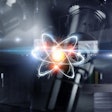Dear Molecular Imaging Insider,
In PET and PET/CT imaging, preparation is paramount to achieving the desired outcome. Patients are routinely instructed to fast for a certain number of hours, and after FDG injection are given an appropriate amount of time for uptake of the tracer.
This protocol has proved successful for visualizing a wide variety of indications, except for imaging the abdominopelvic region. Here, incidental and nonspecific F-18 FDG accumulation in the gastrointestinal tract and urinary tracer activity may compromise accuracy.
Swiss researchers recently came up with a technique using forced diuresis that minimizes these problems and may prove beneficial for patients with bladder cancer or gynecologic tumors. The noninvasive protocol was tolerated by their study group extremely well and could have a major positive impact on the overall diagnostic accuracy of abdominopelvic PET and PET/CT.
To read more about the steps these researchers took to maximize the potential of abdominopelvic FDG imaging on PET and PET/CT, click here. As a Molecular Imaging Insider subscriber, you have access to this story before it's published for the rest of our AuntMinnie.com members.
In other news, molecular imaging procedures can provoke a great deal of anxiety among adults, which can challenge the technique of the nuclear medicine technologist. When the patient is pediatric, the technologist may face not only a skittish subject, but the fears of the family as well.
Sandy Ferency, a nuclear medicine technologist with more than 25 years of experience, recently shared her hard-won tips for a successful pediatric nuclear imaging exam. Her white paper offers practical advice and suggestions for providing as positive a healthcare experience as possible for both the pediatric patient and family members. To read more about Ferency's advice, click here.
Also, if it's late November, it means the annual RSNA conference in Chicago is getting ready to kick off. If you're headed to the windy city for the meeting, check out our Molecular Imaging Road to RSNA preview of the latest technology and applications set for exhibit in McCormick Place by clicking here.
And if you haven't done so recently, be sure to stop in and take a look at our online reference book, Nuclear Medicine on the Internet. Dr. Scott Williams has updated chapters on PET imaging in musculoskeletal neoplasms, lymphoma, and for staging lung cancer, as well as postoperative orthopedic evaluations for joint infection and the use of technetium in myocardial perfusion imaging. Check out his most current postings by clicking here.




















